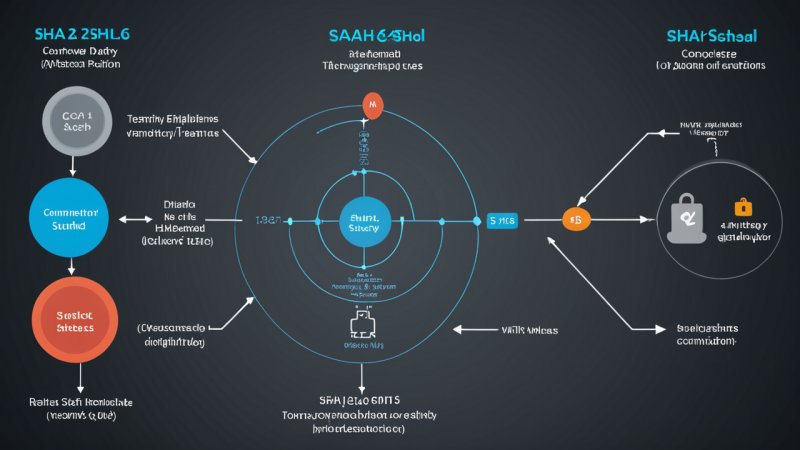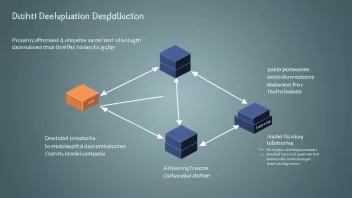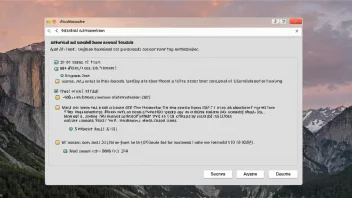In the world of cybersecurity, cryptographic hashing algorithms play a critical role in ensuring data integrity, securing digital identities, and enabling blockchain technology. Two of the most widely used hashing algorithms are SHA-256 and SHA-1. This article will delve into a comparative analysis of SHA-256 and SHA-1, focusing on their structure, security features, performance, and applications, while highlighting their respective advantages and disadvantages.
Understanding Cryptographic Hashing Algorithms
Cryptographic hashing algorithms are mathematical functions that transform input data into a fixed-size string of characters, which appears random. These algorithms are essential for various cybersecurity applications, including digital signatures, password storage, and blockchain technology. The output, known as a hash value, is unique to each unique input, making it nearly impossible to reverse-engineer the original data from the hash.
Overview of SHA-1
SHA-1, or Secure Hash Algorithm 1, was developed by the National Security Agency (NSA) and published in 1995. It produces a 160-bit hash value and was widely adopted for many security applications, including SSL certificates and digital signatures. However, SHA-1 has come under scrutiny for its vulnerabilities, particularly to collision attacks, where two different inputs produce the same hash.
Overview of SHA-256
SHA-256 is part of the SHA-2 family of cryptographic hash functions, designed as an improvement over SHA-1. Released in 2001, SHA-256 generates a 256-bit hash value, providing a larger hash space, which significantly reduces the likelihood of collision attacks. SHA-256 is widely used in blockchain technology, including Bitcoin, and is considered more secure than its predecessor.
Security Features
SHA-1 Security
SHA-1 is now considered weak due to several documented vulnerabilities. In 2017, researchers demonstrated a practical collision attack against SHA-1, prompting many organizations to abandon its use. Consequently, SHA-1 is no longer recommended for cryptographic security purposes.
SHA-256 Security
SHA-256 offers significantly enhanced security features compared to SHA-1. With a larger hash size and more complex algorithms, it is resistant to collision attacks and pre-image attacks. As of now, no practical vulnerabilities have been identified for SHA-256, making it a more secure choice for sensitive data.
Performance Considerations
SHA-1 Performance
SHA-1 is faster than SHA-256 in terms of hash generation speed due to its smaller output size and simpler computation process. This speed advantage made it a popular choice for applications where performance was prioritized over security, but its vulnerabilities have led to decreased usage.
SHA-256 Performance
While SHA-256 is slower than SHA-1, its performance is still acceptable for most applications. The increased computational requirements are a trade-off for enhanced security, making SHA-256 suitable for high-security environments, such as cryptocurrency transactions and secure communications.
Applications and Use Cases
SHA-1 Applications
Historically, SHA-1 was employed in various applications, including:
- Digital signatures
- SSL certificates
- Version control systems (e.g., Git)
- Code signing
However, due to the vulnerabilities associated with SHA-1, many of these applications have transitioned to more secure hashing algorithms.
SHA-256 Applications
SHA-256 is the preferred hashing algorithm for many modern applications, including:
- Cryptocurrency (e.g., Bitcoin)
- Blockchain technology
- Secure password storage (e.g., hashing user passwords)
- Digital signatures and certificates
Its robustness makes SHA-256 ideal for ensuring data integrity in high-security environments.
Pros and Cons of SHA-1 and SHA-256
SHA-1
Pros:
- Faster hash generation
- Lightweight on resource consumption
Cons:
- Vulnerable to collision attacks
- No longer recommended for secure applications
SHA-256
Pros:
- More secure against attacks
- Widely accepted in blockchain and secure applications
Cons:
- Slower hash generation compared to SHA-1
- Higher resource consumption
Conclusion
In conclusion, the choice between SHA-1 and SHA-256 largely depends on the specific requirements of the application in question. While SHA-1 may provide faster performance, its security vulnerabilities make it unsuitable for modern cybersecurity needs. On the other hand, SHA-256, with its enhanced security features and growing adoption in critical applications like blockchain technology, is the recommended choice for any application requiring strong data integrity and protection. Organizations should prioritize the use of SHA-256 to safeguard sensitive information and ensure compliance with contemporary security standards.






